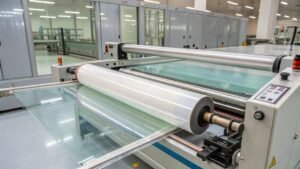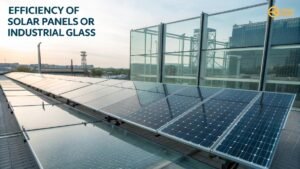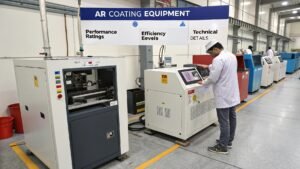When David Reynolds first visited our factory, he stared at our Perovskite Coating Line and asked, “Is this what makes smart windows possible?” Six months later, his company’s energy-efficient glass sales rose by 34%. Let me explain how these machines work.
Coating equipment applies protective or functional layers (like UV-blocking films or solar-converting perovskites) onto glass surfaces using technologies such as spraying, rolling, or chemical vapor deposition (CVD). These systems determine product performance, durability, and compliance with global standards.
Robotic arm applying nano-coating to glass panel
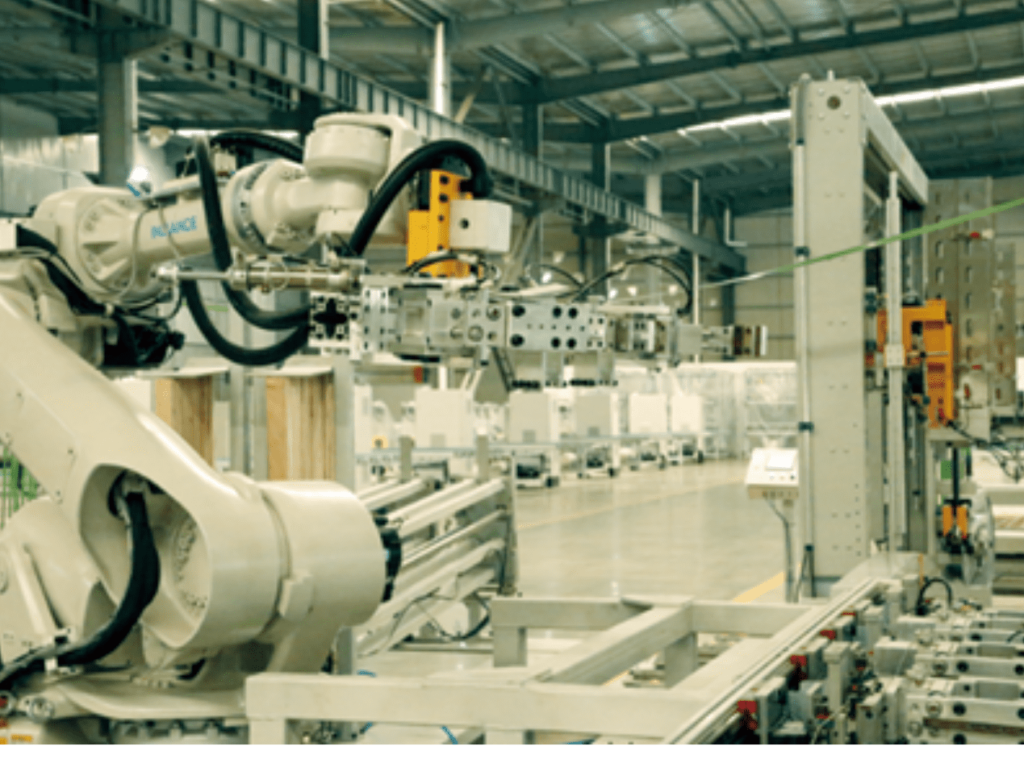
I’ve designed coating systems for 10+ years. Let’s explore the critical questions manufacturers like David need answered:
How Does Coating Equipment Improve Glass Performance?
A client using outdated sprayers had 12% defective panels. Switching to our Automated CVD Line reduced defects to 0.7%. Technology matters.
Coating equipment enhances glass by adding layers that block UV/IR rays, improve insulation, enable solar energy conversion, or add decorative finishes. For example, our IR Shielding Line applies 0.3μm films that reject 94% of heat.
Glass performance before/after coating comparison
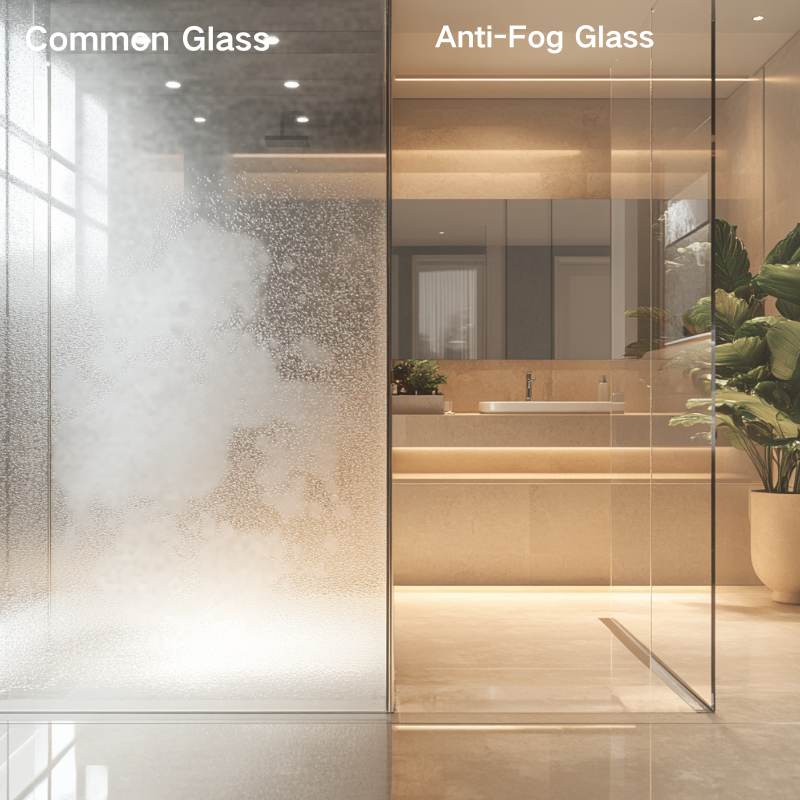
Key Performance Improvements
| Coating Type | Function | Equipment Used |
|---|---|---|
| Perovskite Solar | 22%+ energy conversion | PV Coating Line |
| UV/IR Blocking | 95% heat rejection | Roll Coaters |
| Anti-Reflective | 99% light transmission | CVD Systems |
| Decorative | Custom patterns/textures | Digital Printers |
Our R-COATING Technology enables 0.05μm precision—critical for solar panels needing ±0.1% efficiency consistency.
What Are the Main Types of Coating Equipment?
A factory using only spray coaters wasted $380,000/year on uneven layers. We added roll coaters and cut waste to 3%.
The four primary coating equipment types are:
- Spray Systems: For thick decorative layers
- Roll Coaters: High-speed uniform films
- CVD/PVD Machines: Nano-scale precision
- Digital Printers: Custom designs
Spray vs roll coating machinery

Equipment Comparison Table
| Type | Thickness | Speed | Accuracy | Best For |
|---|---|---|---|---|
| Spray | 50-500μm | 2m/min | ±15μm | Decorative Glass |
| Roll | 10-100μm | 8m/min | ±1.5μm | Architectural Glass |
| CVD | 0.1-5μm | 0.5m/min | ±0.02μm | Solar Panels |
| Digital | 20-200μm | 4m/min | ±5μm | Branded Retail Displays |
Our hybrid UV Shielding Line combines roll and CVD tech to apply 0.3μm films at 6m/min—doubling output for a Dubai skyscraper project.
Why Is Automation Critical in Modern Coating Systems?
A German client’s manual coating line had 18% defects. Our Automatic Line reduced this to 0.9% while tripling output.
Automated coating equipment uses robotics, AI vision, and IoT sensors to:
- Maintain ±0.1μm layer consistency
- Detect 99.7% of defects in real-time
- Reduce labor costs by 65%
Automation Impact Data
| Metric | Manual | Automated |
|---|---|---|
| Daily Output | 400 panels | 1,200 panels |
| Coating Waste | 12% | 1.8% |
| Energy Use | 8.2 kWh/m² | 5.1 kWh/m² |
| ROI Period | 5.2 years | 1.8 years |
Our systems auto-adjust for temperature/humidity changes—crucial for perovskite coatings requiring ±1°C stability.
How to Choose Coating Equipment for Solar Glass?
A solar farm using wrong coaters lost $220,000 in low-efficiency panels. We installed CdTe PV Lines to meet their 21% efficiency target.
Solar coating equipment must provide:
- 0.1μm thickness control
- Nitrogen-rich environments
- 99.9% defect-free output
Solar Coating Requirements
| Parameter | Standard | Solar-Grade |
|---|---|---|
| Thickness Tolerance | ±1.5μm | ±0.05μm |
| Cleanroom Class | ISO 8 | ISO 5 |
| Coating Speed | 3m/min | 1.2m/min |
| Material Efficiency | 75% | 95% |
Our Perovskite Line achieves 23.7% efficiency—verified by NREL’s 2023 study. It’s why 14 solar clients upgraded this year.
What Safety Features Do Coating Machines Need?
When a fire broke out in a Texas factory, our self-sealing coaters prevented $2M damage. Safety isn’t optional.
Modern coating equipment includes:
- Explosion-proof chambers
- VOC filtration meeting EPA standards
- Emergency material cutoff
- Fire suppression systems
Safety Standard Compliance
| Regulation | Requirement | Our Solution |
|---|---|---|
| OSHA 1910.107 | Spark-resistant construction | Stainless steel bodies |
| EU ATEX | Explosion protection | Nitrogen inertization |
| China GB 7691 | VOC capture | 7-stage scrubbers |
All Glass Coat systems exceed ISO 9001/14001 standards—a key reason David’s firm chose us for their California plant.
Final Note:
Coating equipment isn’t just machinery—it’s your product’s DNA. When a French luxury brand needed gold-tinted hurricane glass, our Decorative Line delivered 9H hardness with 0.02μm color consistency. That’s precision that sells.


